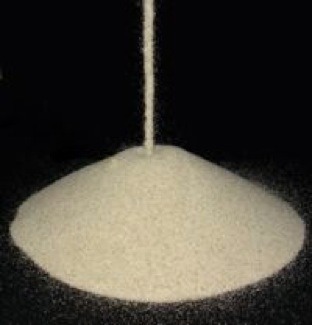 New states emerge when systems are pushed past a critical transition. But certain kinds of systems automatically push themselves to, and remain at, a kind of critical state. The classic example is a sandpile to which sand is being continually added slowly. Eventually, the pile avalanches and the sudden cascades of sand have no intrinsic scale. Their size has a power law distribution. A famous examples are earthquakes which follow the Gutenberg-Richter Law. A simple block and spring model of earthquakes is called the Burridge-Knopoff model. Such systems are said to display self-organized criticality (SOC). This sometimes-overhyped idea is supposed to explain many complex systems from forest fires to the stock market.
New states emerge when systems are pushed past a critical transition. But certain kinds of systems automatically push themselves to, and remain at, a kind of critical state. The classic example is a sandpile to which sand is being continually added slowly. Eventually, the pile avalanches and the sudden cascades of sand have no intrinsic scale. Their size has a power law distribution. A famous examples are earthquakes which follow the Gutenberg-Richter Law. A simple block and spring model of earthquakes is called the Burridge-Knopoff model. Such systems are said to display self-organized criticality (SOC). This sometimes-overhyped idea is supposed to explain many complex systems from forest fires to the stock market.
Here is a paper about modelling forest fires. Notice it is in a Physics journal! Here is a model of forest fires you can play with. Models like this are ultimately derived from the Ising model of magnetism and are called cellular automata models. The claim is that they display universal behavior that still applies when all the details are included, which is certainly true of the Ising model.
Power laws are often seen (and just as often ignored) in economics, where they signal the possibility of rare but devastating "black swan" events. SOC would seem to imply that such events could be triggered by any tiny everyday ocurrence and that history is always poised on the brink of unpredictable cascading consequences. Lewis Fry Richardson observed that the distibution of the size of wars was a power law long before SOC was invented. Both terrorism and large extinctions in the fossil record have been fitted to power laws. SOC puts us always at the edge of chaos. What are the sociological and political implications of this?
SOC has proved to be a powerful metaphor, at least. But its predictive power seems to be limited. But perhaps this is the inevitable consequence of criticality?
Tablet notes: [ Lec22 ]